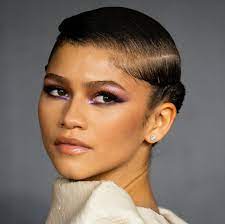
Locs are an elegant hairstyle with many variations to suit different occasions and situations. Combed, braided, and twisted styles may all work to form locs. They can also be created through the twist and rip technique by twisting sections of hair before “ripping” them together to start one large loc. Other methods may include comb coils or palm rolling by your stylist; this involves moving the hair around in their hands to tighten and lock.
Stage 1: Budding
At this point, your locs may still be fragile due to being made from different textures than natural hair and needing special care. Deep conditioning should be performed every two weeks to keep them healthy and give them a natural shine. Though the process can be time-consuming, many loc-wearers believe it’s worth their while.
One blogger writes, “Locs make you feel beautiful and unique; they represent our cultural heritage and identity.” However, it is essential to understand that locs may only suit some lifestyle or occasion. Some even consider this hairstyle “disrespectful”.
Stage 2: Teen
Once the budding stage is over, your locs will reach a period that resembles their teenage years – the teenage locs stage can last between months 12-15. At this point, your hair should thicken and appear more uniform, while locs should still show some swelling but should not quickly unravel when handled.
Now is an excellent opportunity to experiment with pressure styles like rope twists or curly sets that help control loc lumps and swelling. Teenage locs require additional care, including washing your hair more often with a shampoo tailored for locs to avoid build-up, dryness, and scalp itching. Employing protective styles and regular trimming of ends can also help prevent dread rot.
Stage 3: Rooted
At this stage, your locs begin taking shape and developing their proper form, becoming puffier and fuller. Although this stage usually occurs within months for naturalists with looser hair textures, it may take several more months for naturalists with more open locks.
Your locs should become less unruly and will no longer unravel when manipulated. Now, you can style them differently while keeping their style for longer. At the “rooted stage” or “adult stage,” your locs should have reached an adult stage after 18 months. They will become significantly skinnier and heavier, hanging down more when walking, and their uniformity will resemble the finished product.
Maintaining your rooted locs at this point should be straightforward if you follow regular washing, conditioning, retwisting, and oiling regimens to prevent dryness or itching of your scalp.
Stage 4: Rooted Locs
At this stage, your locs will begin to take their final shape. The rooted phase usually takes 18 months, but everyone’s loc journey varies. Teenage locs may look puffier and may appear rebellious and untidy at times, so regular washing and moisturizing are essential to avoid build-up. This is also an excellent opportunity for experimentation with styles like curly sets and rope twists.
Your locs will eventually reach maturity and can lie flat without reformation, often within 18 months or sooner, depending on their texture and length of hair. Looser textures typically take longer to achieve this state of affairs.
